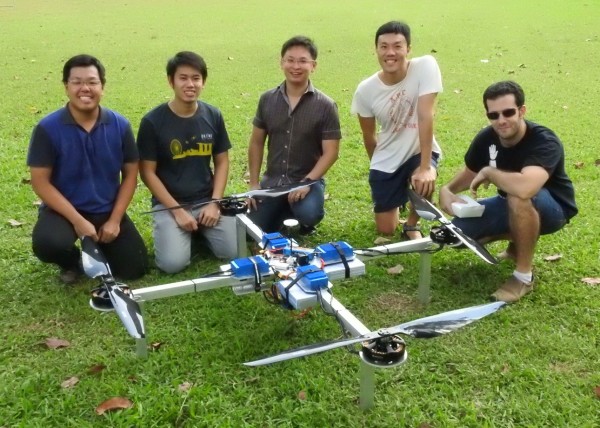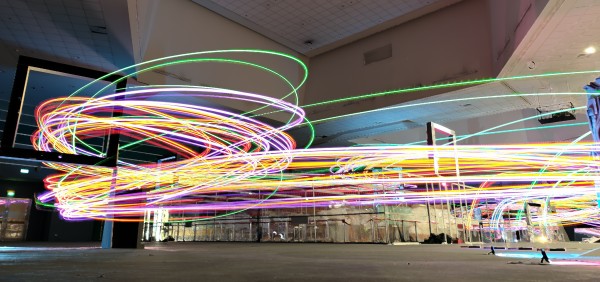When you mention the word drones, what comes to most people’s mind is aerial photography – people flying small aircraft taking photographs from the sky – but the field of drones encompasses much more. It is a fascinating combination of electro-mechanical systems, software algorithms and telecommunications that covers a wide variety of robotic craft. They range from flying platforms and ground rovers to boats and submarines. These craft all share the common traits of being able to operate at a distance, and the ability to function autonomously or semi-autonomously.
How it began
I first got involved with drones during my medical school years. A YouTube video on the nascent sport of drone racing caught my attention, and I ordered some parts off the Internet to experiment with. After a few frustrating weeks, I realised that I was hopelessly underequipped to build anything that would ever leave the ground. I reached out to local drone enthusiasts for help and started my journey into the fascinating community of drone builders. At that time, more than a decade ago, the field of drones was still in its infancy and you could not just go out and buy one. To fly one, you had to build it yourself. There were no courses you could take either; instead, you had to engage with a quirky community of tinkerers, backyard inventors and coders.
It was an exciting time for drone development. Small groups and hobbyists were at the cutting edge of drone techno¬logy. These informal networks consisted of enthusiasts who were writing open- source code, designing circuit boards and adapting smartphone electronics onto a huge variety of platforms. There were no large corporations or institutions that dominated the space, and regulations were mostly non-existent. The groups were diverse in backgrounds, from aerospace and software engineers to lawyers and Air Force officers. Everyone had their own field of interest, with some people specialising in control software and others developing expertise in radio frequencies, electric motors or aerodynamics.
Every month, there would be a new release of some piece of software or hardware which opened up a whole new set of capabilities that we could explore. Locally, we would meet in open fields to test prototypes, and in living rooms and backyards to swap tools, solder circuit boards, 3D-print parts, tune software and test radio control links. Every build was a collaborative experiment that was either a spectacular crash or would soar triumphantly into the sky.
Things got to a point where our local community of enthusiasts were building highly sophisticated drones. There were some which could lift payloads of 100 kg or navigate autonomously across the breadth of Singapore; others could accelerate from 0 to 100 km/h in under a second and pull 10 g turns on every axis. We eventually started a formal association to organise races that drew participants from around the world, and we also assisted the Singapore Government in developing unmanned aerial vehicle regulations to keep people safe.
Some members of the local community went on to start valuable commercial enterprises, deploying drones in industries ranging from filmmaking, remote surveying and building inspections, to security and defence. Similar organisations in Ukraine have formed the core teams responsible for developing drone squads involved in the conflict.
Growing interests beyond drones
Despite the distraction of many other pursuits, drones have kept my interest till this day. Drones cover an extremely broad space, with endless fields to explore. Beyond its role as an interesting pastime, I have found that my involvement in drones gives me insight into the foundational building blocks of technological advances that will change the world in the years ahead. The systems that drones are built on, such as weighted feedback algorithms, sensor fusion and electro-mechanical interfaces, cover principles that are broadly applicable to the understanding of artificial intelligence (AI), machine learning and robotics.
The intersection of AI, machine vision and robotics will dramatically alter the world in the decade ahead and will have a profound impact on how we practise medicine. To provide the best care, physicians will need to understand these technologies, and their capabilities and associated pitfalls. The best performing medical teams will be human-machine hybrids leveraging the strengths of each. As humans, we will never be able to memorise more than an AI model that has the global corpus of medical knowledge in its database, or outperform a surgical robot guided by sensors with a resolution down to a micrometre, operating at 10,000 frames per second, but we are not about to become obsolete.
Despite the headlines of AI systems acing postgraduate medical board examinations and law school tests, humans remain irreplaceable in many ways. On a recent Abstraction and Reasoning Corpus for Artificial General Intelligence test, which is a test of general intelligence, the most advanced AI models struggled to get a score above 2%, while the average human score was 60%. Skills such as building rapport and trust with patients so that they convey an accurate history, or understanding that there is no optimum treatment outcome that applies to everyone, are skills that remain firmly in human hands. The ability to navigate novel situations and integrate broad knowledge from fields beyond medicine into the decision¬making process are areas that humans far outperform any AI currently available and will likely continue to do so for the foreseeable future.
An important reminder
It will be an exciting and challenging time for doctors, but the fundamental principles still hold true, and maybe more so than ever. To paraphrase a quote from the Hippocratic Oath that remains an excellent guide:
"I will remember that there is art to medicine as well as science, and that warmth, sympathy and understanding may outweigh the MedAI's treatment plan or the surgical robot's knife."

100 kg heavy lift drone prototype

Science Center Singapore's Drone Odyssey Challenge